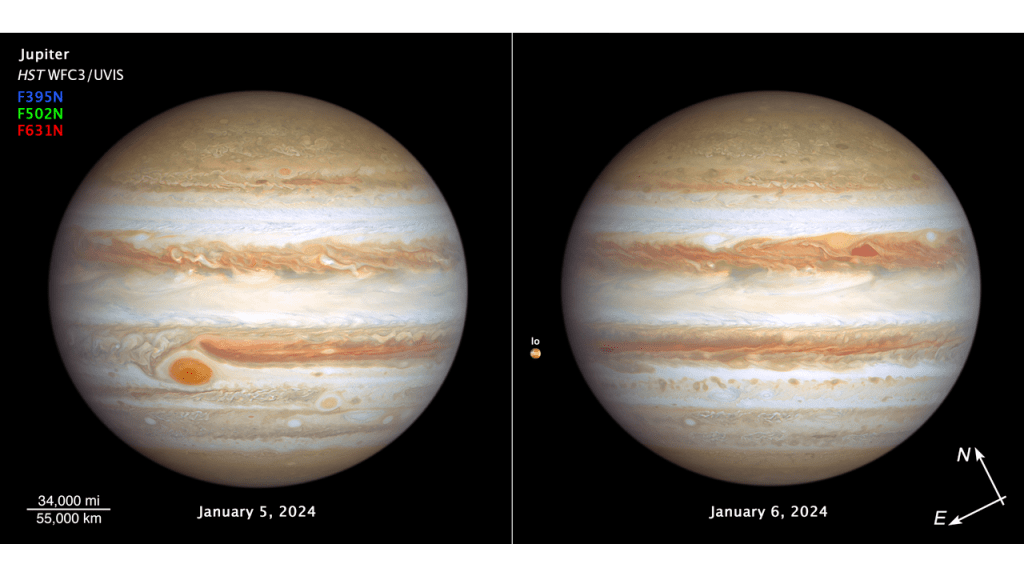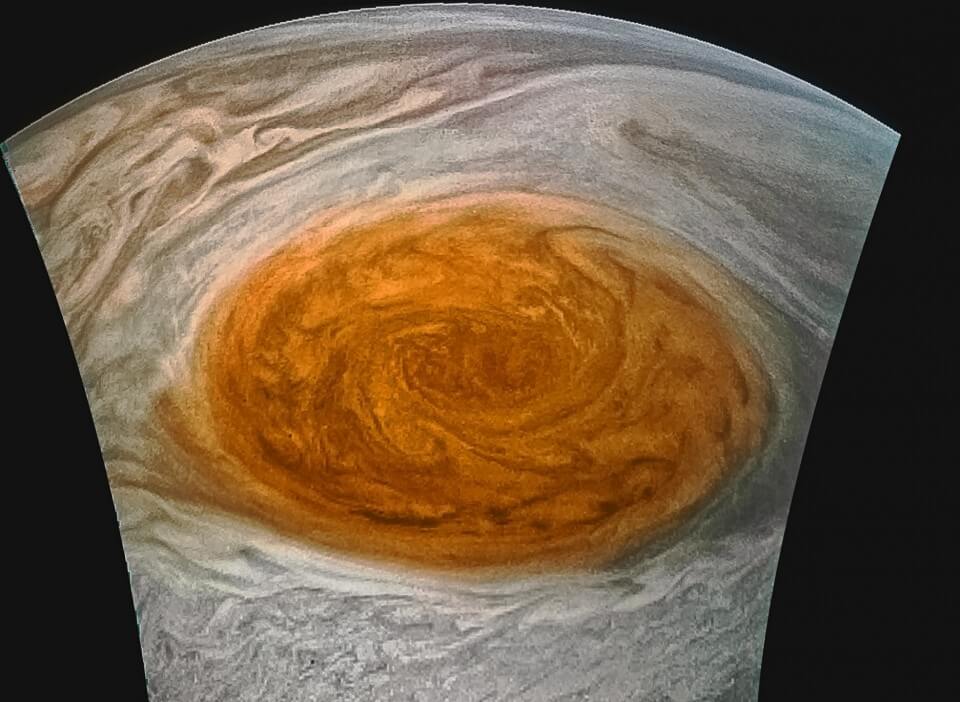Jupiter is well known for its Great Red Spot, a feature that was discovered by Galileo over 400 years ago! Astronomers have been tracking the size and shape of it for over a century but the most accurate measurements have come from the Hubble Space Telescope. Every time Earth and Jupiter are at their closest, Hubble takes a series of images and it's these images that have detected that the spot jiggles from day to day. Not only does it change size but length and width too leaving astronomers baffled.
Jupiter is the largest planet in the Solar System and, like the other outer planets is a giant ball of gas. It's so large all the other planets in the Solar System can be fitted inside with plenty of room to spare. Composed mostly of hydrogen and helium it can be seen as a colourful disk through amateur telescopes with belts, storms and of course the Great Red Spot. The spot was first discovered by Galileo in around 1610 when he became the first person to turn a telescope on the distant planet.
The Great Red Spot is a storm which has been raging for over 400 years. It's large enough that Earth could easily fit inside more than once and is an anticyclone system similar to those seen here on Earth. It rotates in a counterclockwise direction with speeds reaching in excess of 640 km per hour. Over the years, it seems to have been generally decreasing in size albeit not as quickly as expected.
Images taken by Hubble of the storm were collected over a 90 day period between December 2023 and March 2024 when the Jupiter was at its closest to Earth. Its high resolution cameras showed that it is jiggling like a bowl of jelly and certainly not as stable as we once thought. Previous studies showed that there is an amount of movement along the longitudinal axis but no suggestion it's changing in size.
The team of astronomers led by Amy Simon of NASA's Goddard Space Flight Centre in Maryland published their findings in the Planetary Science Journal. Simon's said "This is really the first time we've had the proper imaging cadence of the GRS. With Hubble's high resolution we can say that the GRS is definitively squeezing in an out at the same time as it moves faster and slower. That was very unexpected, and at present there are no hydrodynamic explanations."
The study was a part of NASA's Outer Planet Atmospheres Legacy program (OPAL) whose aim is to obtain a long time series of observations of the outer planets to understand their evolution and atmosphere. These recent observations though were purely to explore and analyse the GRS. Extrapolating forward in time the team think that the GRS will keep shrinking before it stabilises in a less elongated shape than we see today. Currently it's particularly 'wide' in latitude but once it shrinks it will likely stabilise with the winds holding it in place.
The team hope that to understand the GRS was to understand the mechanisms of the largest storms in the Solar System which would ultimately help us to learn more about hurricane systems on Earth.
Source : NASA's Hubble Watches Jupiter's Great Red Spot Behave Like a Stress Ball
 Universe Today
Universe Today


